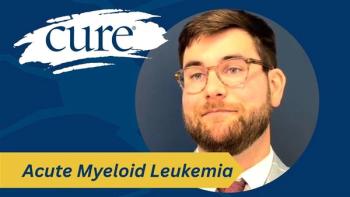
Expert Discusses Exciting Advancements in Treating GI Cancers
The role of precision medicine has become a significant area of study, specifically with genomics and liquid biopsies. With the introduction of next-generation sequencing and an improvement in the understanding of molecular alterations, treatments for patients have begun to be individualized.
Molecular testing, targeted therapies and checkpoint inhibitors continue to shape the treatment of patients with gastrointestinal (GI) cancers.
The role of precision medicine has become a significant area of study, specifically with genomics and liquid biopsies. With the introduction of next-generation sequencing and an improvement in the understanding of molecular alterations, treatments for patients have begun to be individualized.
In an effort to overcome resistance to targeted therapies, investigators have started using liquid biopsies. However, expert Luis A. Diaz, M.D., does not predict this will take the place of standard biopsies in the future.
“I do not think [liquid biopsies] are sufficiently sensitive, but I do think that there will be focused applications, like minimal residual disease, early detection, or tracking resistance where they will have profound effects,” said Diaz.
In an interview conducted at the 2017 OncLive® State of the Science SummitTM on Gastrointestinal Cancers, Diaz, head of the division of Solid Tumor Oncology at Memorial Sloan Kettering Cancer Center, discussed the precision medicine approaches available and in development for the treatment of patients with GI malignancies.
Please provide an overview on precision medicine in GI cancers.
I discussed the role of precision medicine, specifically genomics, for the management of GI malignancies. I gave an overview of what genomics is followed by applications in areas such as targeted therapy and immunotherapy. An emerging approach is pan-tumor markers, meaning markers that do not just define one tumor type, but if found in any tumor type could have a dramatic antitumor response. There are many opportunities and pitfalls to that approach. The second part of the talk was about liquid biopsies, circulating tumor DNA, how that leverages precision medicine, and how we can apply that for concepts like minimal residual disease, tracking resistance and even early detection. I discussed how we have evolved from targeted sequencing, meaning one gene at time to more expanded sequencing-like panels and perhaps even exome sequencing.
At what point do you give a patient genomic testing?
It depends on the scenario. If the patient is metastatic, any genetic testing from the beginning is important. You are dealing with a situation where about 80 percent of patients will be dealing with a lethal scenario. Therefore, it is important to have options. Those options are typically in the form of clinical trials but, more often, we find genomic alterations that could be used earlier and could have profound results for those individual patients.
What do we know about pan-tumor approaches and what questions remain?
There are two pan-tumor approaches that I would highlight. One is microsatellite instability (MSI) and the second is NTRK fusions. Both of those are present at low levels in multiple different tumor types but if you find them, you have dramatic responses. Those dramatic responses tend to appear to be for years. This is only present in 0.1 percent of patients. The question is, “Are we dealing with a curative therapy?” That is the outstanding question right now. Are these going to be long-term survivors or are they going to be survivors who will eventually progress down the road? We do not know the answer to that but hopefully we will know soon.
Anecdotally, have you seen these patients with NTRK fusions or MSI having responses to entrectinib?
With MSI and NTRK, we are starting to enter a phase where these are not the old genomic biomarkers, which were mediocre. These are the ones that can have a profound effect.
Do you expect to see more basket trials where we explore treatments for patients that is not based on tumor type?
I think so and we will have to focus in on applications that have a high potential for working. We have a lot of drugs out there that work and we want to move things to a broader audience and more high-value proposition.





